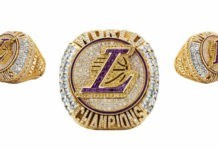
Are you exploring the best ways to reach new customers in the digital age? While digital marketing is often seen as seemingly opposed to traditional methods of marketing – like television, radio, and print ads – savvy marketers know that there are plenty of opportunities for combining both approaches into an effective strategy. Not only can each provide unique advantages to your entire marketing plan, but they also complement each other and create a more powerful message.
In this blog post, we’ll take a closer look at how digital and traditional marketing can work together—and why it’s so important for ambitious companies who want to stand out from their competitors.

Printing Companies
Printing companies can play a pivotal role in blending digital and traditional marketing strategies. For instance, QR codes can be printed on physical materials like brochures, business cards, or billboards. These codes become a bridge to the digital world when scanned with a smartphone, leading potential customers directly to a landing page, digital coupon, or even an online shopping cart.
Working local – whether that’s a Chicago printing company, a Los Angeles printing shop, or an online printing company that can ship nationwide, you can create a seamless experience for your consumers, making it easy for them to interact with your business and purchase from you. This also provides a tangible reminder of your business that customers can hold onto and reference later.
Creating a Unified Brand Message
A unified brand message is crucial when employing a strategy that combines digital and traditional marketing methods. This ensures that whether your customers are interacting with your print material or your social media channels, they receive consistent and clear communication about your brand values, mission, and products or services. This consistency not only builds brand recognition and trust but also helps to reinforce your key messages and value propositions across all platforms.
For instance, a tagline or slogan on your physical brochure should align with what’s presented in your digital content. Similarly, the aesthetic elements of your brand, such as color schemes, logos, and typography, should be consistent across both digital and traditional marketing materials, creating a harmonious and recognizable brand experience for your customers.
Synergizing Social Media with Print
Utilizing social media platforms in conjunction with print marketing can produce powerful results. For example, your print materials can tease exclusive content on your social media channels, encouraging customers to follow your accounts for more information.
Conversely, your social media posts can promote upcoming print materials or events. Better yet, by incorporating social media icons or handles within your print materials, you provide a clear call to action, bridging the gap between the physical and digital worlds.
This not only increases your social media following but also boosts engagement by encouraging customers to interact with your brand across multiple platforms.
In addition, user-generated content from social media can be featured in print materials, strengthening your brand’s community and authenticity. In essence, the synergy of social media and print marketing can significantly amplify your brand’s reach and influence in the marketplace.
Cross-Channel Promotion
Cross-channel promotion is an effective way to increase your brand’s visibility and create a holistic customer journey. It involves leveraging each of your marketing channels to promote and support the others, ensuring a seamless communication flow with your customers. For example, you can promote your website or blog on your social media pages and vice versa.
Similarly, your print materials can include your website URL, social media handles, or even QR codes that lead to your online platforms. This strategy not only diversifies your marketing efforts but also enables you to reach your audiences wherever they are, whether they prefer browsing online or perusing print materials.
Consequently, cross-channel promotion can significantly enhance your audience engagement, brand recognition, and ultimately, your return on investment.

Utilizing Data-Driven Insights
In the modern era of marketing, data-driven insights play a vital role in formulating effective strategies. The beauty of combining digital and traditional marketing methods is the vast amount of data that can be collected and analyzed.
Digital platforms offer comprehensive data like user demographics, engagement metrics, and customer buying behaviors, which can be harnessed to refine your traditional marketing strategies, such as print advertising.
On the other hand, traditional marketing can provide qualitative data, like customer feedback or responses, that can be used to enhance digital marketing efforts. Armed with these insights, marketers can make informed decisions about where to invest their resources, what messaging resonates with their audience, and how best to connect and engage with customers across all platforms.
The result is a robust, holistic marketing approach that is not only more effective but also more responsive to the evolving needs and preferences of your audience.
The Role of QR Codes and Augmented Reality
QR Codes and Augmented Reality (AR) have emerged as pivotal tools in merging the physical and digital aspects of marketing.
QR Codes, as mentioned earlier, can be integrated into print materials to direct customers to online content or offers, thereby enhancing engagement and conversion rates. But, their utility extends beyond that. For instance, QR Codes can also be used to launch AR experiences directly from physical marketing materials.
AR technology lets businesses overlay digital content in the real world, providing an immersive and interactive experience for customers. When combined with print marketing, AR can bring static materials to life, showcasing products more dynamically and engagingly.
For example, a QR code on a product catalog can launch an AR interface that allows customers to virtually interact with the product, such as viewing it in 3D or even virtually “trying it on”.
This not only enhances the user experience but also provides a unique value proposition that can differentiate your brand in the marketplace.
By effectively leveraging QR Codes and AR, businesses can bridge the gap between digital and physical marketing, creating a compelling, interactive, and seamless customer experience.
In conclusion, digital and traditional marketing are not competing forces, but rather complementary strategies that can work together to create a more robust and effective approach. By combining the strengths of both approaches, businesses can reach wider audiences, increase brand recognition and trust, and ultimately drive higher conversions.
From printing companies that bridge the physical-digital divide to synergizing social media with print materials, cross-channel promotion, and utilizing data-driven insights, there are plenty of opportunities for businesses to blend digital and traditional marketing effectively.







